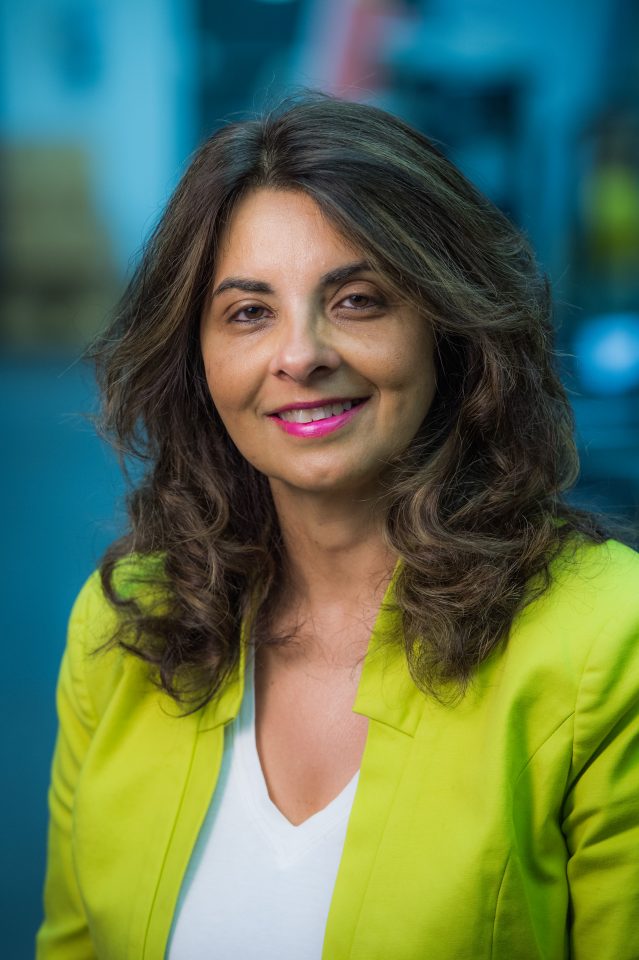The start of the youth soccer season in Richmond this fall included more than the usual introductory team meetings, skill assessments and warm-ups. Some players also had their brain waves measured.
Dozens of boys underwent electroencephalograms (EEGs) while sitting quietly with their eyes closed in a darkened room, trying to relax. Before or after those brain wave measurements, they answered a series of questions about their mental health and performed some cognitive and balance tests.
They were participating in a pilot of new technology developed at UBC that aims to provide an objective determination of whether someone has received a concussion.
If the technology works, it could bring much more confidence to the diagnosis of concussions as well as the determination of whether someone, after experiencing a concussion, is ready to resume sports or other activities.
“Currently, there is no objective, gold-standard measure of a concussion,” says Naznin Virji-Babul, an Assistant Professor in the Department of Physical Therapy, who is one of the co-developers of the technology. “The most commonly used assessment is the Sport Concussion Assessment Tool, or SCAT, which provides a standardized set of questions and tests but is very subjective and not very reliable. Players, especially children, can have difficulty assessing their own symptoms, like attention span or fatigue. And sometimes, in their eagerness to return to play, they might downplay their symptoms.”
For those reasons, even physicians are often reluctant to make a definitive diagnosis, she says.
Dr. Virji-Babul, an expert in head trauma, has been studying how brains “re-wire” themselves in response to an injury. While working with Arnold Yeung, who earned a bachelor’s degree in mechanical engineering from UBC this year, and Saurabh, who earned a master’s degree in biomedical engineering in 2015, they hit upon the idea of using machine learning to develop an algorithm capable of distinguishing between the EEGs of healthy brains and those who have been diagnosed with a concussion.
They spent a year analyzing EEGs of children in Richmond’s Seafair Minor Hockey Association – some who were deemed to have had a concussion, along with healthy controls. With that data, they produced an algorithm that they say is 95 per cent accurate in distinguishing between a healthy and concussed brain (with concussion based on clinical diagnosis by a physician).
“Certain features in the signals of the brain – even when the brain is at rest – are distinct between the two groups,” Dr. Virji-Babul says.
Dr. Virji-Babul, Yeung and Saurabh needed to replicate that success on a larger scale if their technology has any chance of actually gaining acceptance from the scientific, medical and athletic communities.
After establishing a UBC spin-off company called EEGlewave Inc., they approached Richmond FC, the town’s boys’ soccer association. The organization’s leaders were eager to sign on, offering to pay part of the cost of conducting baseline assessments of any players whose families were interested in participating. The assessments took place over two weekends in a meeting room at Richmond’s Brighouse Park.
“We were trying to develop a program where we could better take care of our athletes, and we didn’t have anything in place,” says Rein Weber, Chairman of Richmond FC. “So we thought this would be a great opportunity for us.”
When a participating player suffers a head injury, he will come to the Centre for Brain Health for follow-up EEGs within a day or two, followed by follow-up scans one month later, then three months later, six months later and a year later.
“We’ll really be able to see the impact of concussions, longitudinally, on these kids,” Dr. Virji-Babul says
If the EEG indicates a concussion, the EEGlewave team will recommend that the child be examined by a physician to get a formal diagnosis and treatment plan (if they haven’t already done that), and will recommend physicians, physical therapists and neuropsychologists specializing in concussions.
“It will go a long way in keeping our players safe,” Weber says.
Dr. Virji-Babul plans to use the data collected from the Richmond soccer players to submit an article to peer-reviewed journals. Already, based on scans of the hockey players, the EEGs show a clear trend – a brain that is concussed does not quickly return to baseline.
“The brain appears to reorganize even after a single concussion, but we don’t know whether it’s a good kind of neuroplasticity, or if there are some underlying, subtle cognitive deficits that aren’t easily detected,” she says.
